Trees Birds Mammals Fish Amphibians Reptiles
Wild Algarve
Bookshop
Marbled White Butterfly - Melanargia galathea
Phylum: Arthropoda - Class: Insecta - Order: Lepidoptera - Family: Nymphalidae
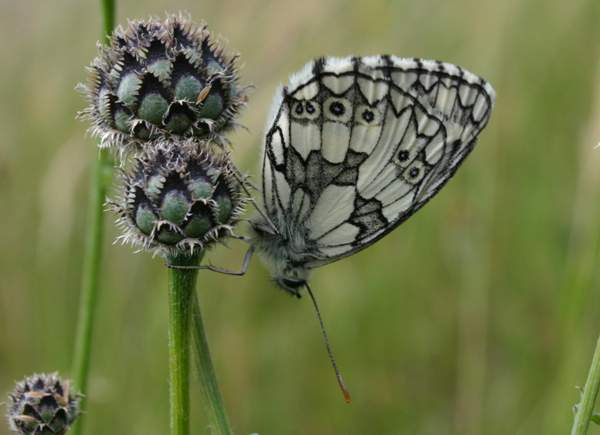
The Marbled White is more closely related to the 'browns' than to other white butterflies, as its subfamily Satyrinae suggests. One of the most beautiful of Britain's butterflies, despite an almost monochrome colouring, the Marbled White inhabits chalk downland and other areas of wildflower-rich unimproved grassland.
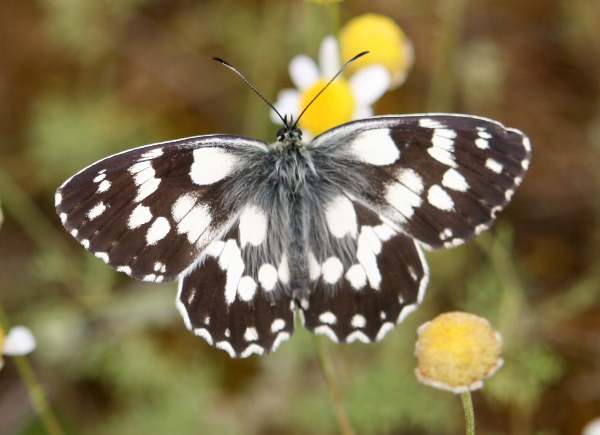
Distribution
In Britain the Marbled White is most abundant in the southern parts of England and Wales, although its northern range extends almost to the Scottish Border.
This butterfly is not recorded from Ireland, but on mainland Europe it occurs in most central and southern countries (it is absent from Scandinavia). To the south its range extends into northern Africa, and to the east into several Middle Eastern countries including Iran.
The Marbled White is absent from Portugal and from southern Spain where a similar species, the Iberian Marbled White (Melanargia lachesis) occurs.
In the Balkans another similar butterfly could be confused with Melanargia galanthea, and that is the Balkan Marbled White, Melanargia larissa.
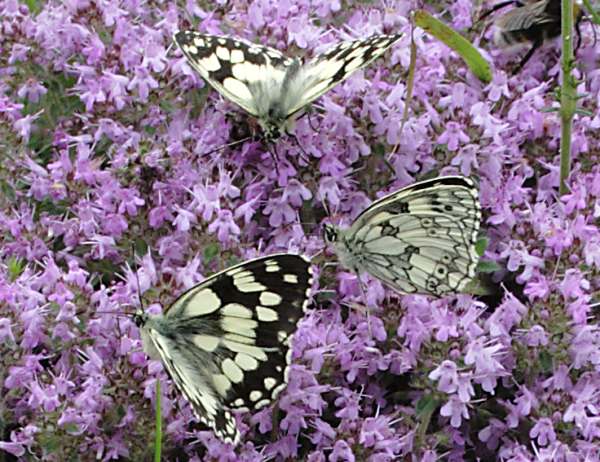
Lifecycle
The larval foodplants include Sheep's Fescue, Festuca ovina, and Red Fescue, Festuca rubra, and several other grasses commonly associated with neutral or alkaline soils.
The Marbled White produces just a single brood, the first adults emerging in late June and emergence continuing through to the end of July. Some adults can be usually seen flying until the middle of August.
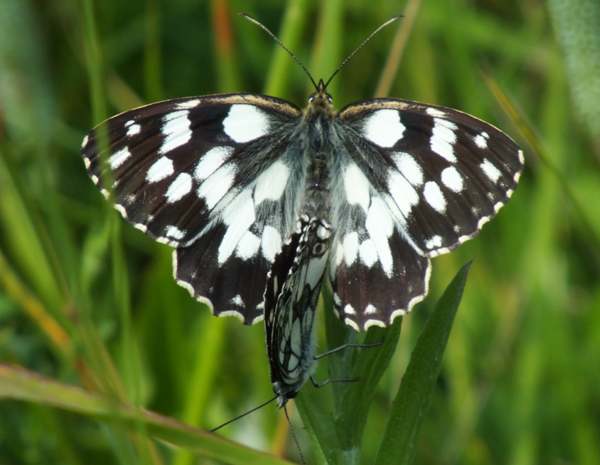
Rather than attach its eggs to a larval foodplant, the female Marbled White simply drops them from the air above rough grassland during July and early August. The whitish rounded eggs take two or three weeks to hatch, and soon after the tiny caterpillar has eaten its way out of its eggshell and began feeding on grass, it goes into hibernation until the following March. From March until June the caterpillars feed at night and rest by day. The brown-headed caterpillars take one of two forms: some have yellowish green bodies while others are pallid brown, in both cases with narrow dark-brown lines along their backs and sides. At pupation the Marbled White produces a brownish chrysalis that lies on or just below the soil surface; the pupation stage takes approximately three weeks, at the end of which the adult butterfly emerges.
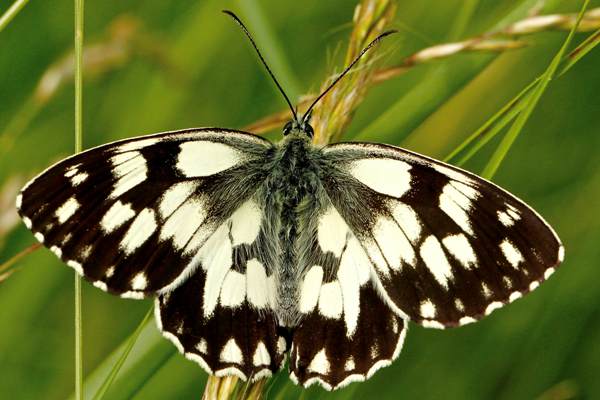
Acknowledgements
This page includes pictures kindly contributed by David Adamson and James Wainscoat.
Studying butterflies and moths...
Excited by rivers and streams? So are we, and we're pretty sure you would find the Winding River Mystery trilogy of action-packed thrillers gripping reading too. Dead Drift, Dead Cert, and Dead End are Pat O'Reilly's latest river-based novels, and now they are available in ebook format. Full details on our website here...
Buy each volume in ebook format for only £2.47 on Amazon... Paperbacks also available on Amazon at £6.95 each. All proceeds go towards keeping the First Nature website online.
Please Help Us: If you have found this information interesting and useful, please consider helping to keep First Nature online by making a small donation towards the web hosting and internet costs.
Any donations over and above the essential running costs will help support the conservation work of Plantlife, the Rivers Trust and charitable botanic gardens - as do author royalties and publisher proceeds from books by Pat and Sue.